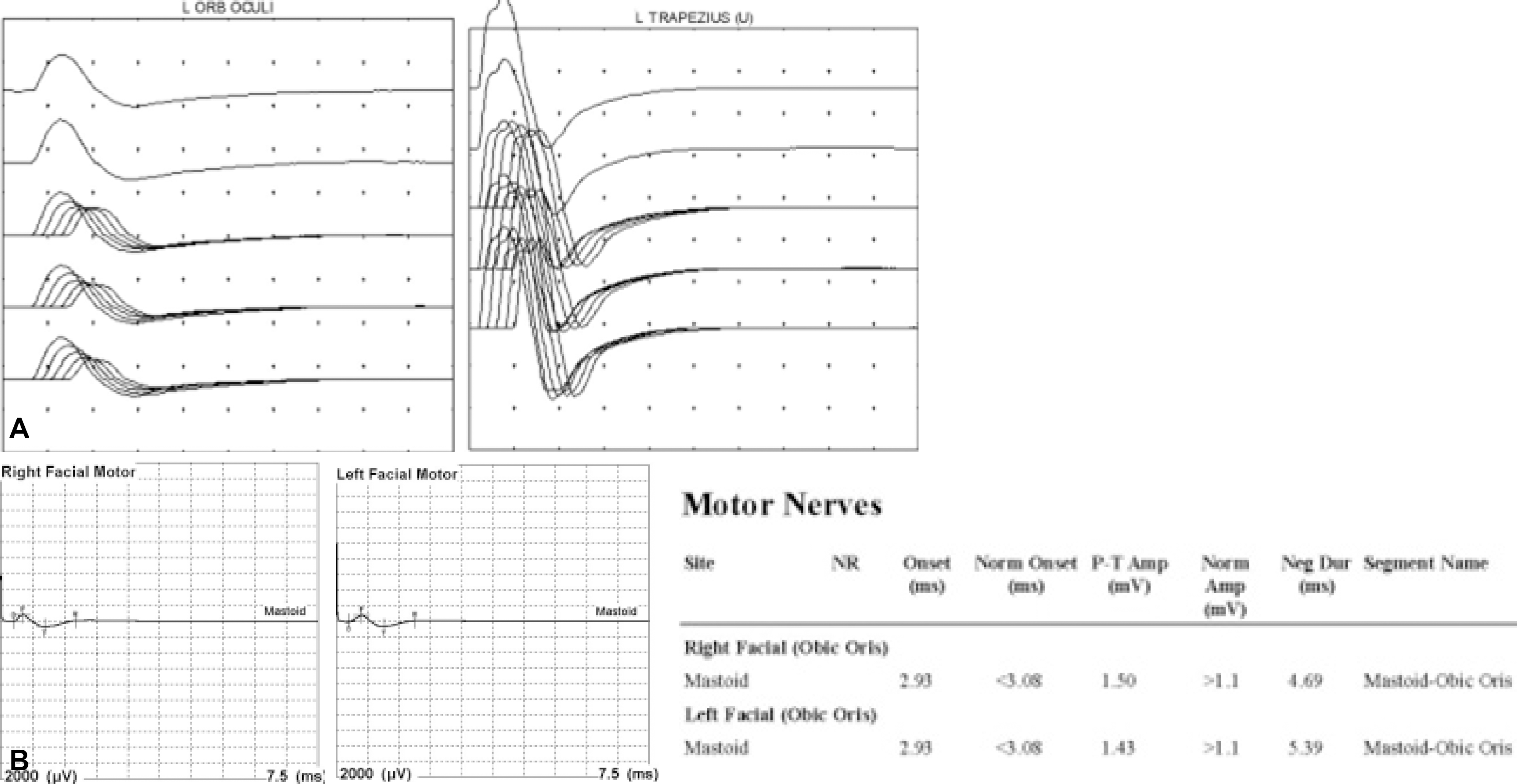REFERENCES
1.Keane JR. Bilateral seventh nerve palsy: analysis of 43 cases and review of the literature. Neurology. 1988. 44:1198–1202.
2.Cucurachi L., Cattaneo L., Gemignani F., Pavesi G. Late onset generalized myasthenia gravis presenting with facial weakness and bulbar signs without extraocular muscle involvement. Neurol Sci. 2009. 30:343–344.

3.Chia LG. Facial weakness without ocular weakness in myasthenia gravis. Muscle Nerve. 1988. 11:185–186.
4.Kini PG. Juvenile myasthenia gravis with predominant facial weakness in a 7-year-old boy. Int J Pediatr Otorhinolaryngol. 1995. 32:167–169.

5.Jain V., Deshmukh A., Gollomp S. Bilateral facial paralysis: case presentation and discussion of differential diagnosis. J Gen Intern Med. 2006. 21:7–10.

6.Keesey JC. Clinical evaluation and management of myasthenia gravis. Muscle Nerve. 2004. 29:484–505.

7.Jeannet PY., Marcoz JP., Kuntzer T., Roulet-Perez E. Isolated facial and bulbar paresis: a persisent manifestation of neonatal myasthenia gravis. Neurology. 2008. 70:237–238.
Go to : 
 | Fig. 1.The results of repetitive nerve stimulation test and facial nerve conduction study. The repetitive nerve stimulation at 2 Hz recording over the orbicularis oculi (left) and trapezius (right) muscles showed decremental response (A). Facial nerve conduction study showed normal distal latency and bilateral reduced amplitude of compound muscle action potentials (B). |




 PDF
PDF ePub
ePub Citation
Citation Print
Print


 XML Download
XML Download